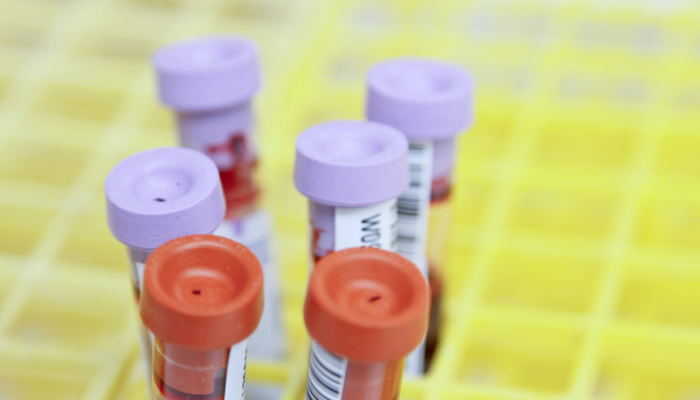Three Tests Your Doctor Should Be Ordering But Isn’t
AUGUST 14, 2018 by DR. HEATHER MODAY, MD
As part of every work up with a patient, I order testing for vitamin and mineral levels. After reviewing the tests, my patients are often shocked. They often ask-” Why doesn’t my doctor order vitamin and mineral levels on me?” I wish I had an answer to that question as I consider nutritional evaluations an inherent part of assessing someone’s overall health. Every biochemical process in the body requires certain nutrients to work properly. When we don’t have adequate stores, that is when disease develops.
A body with suboptimal levels of vitamins and minerals is like a building constructed with poor materials: it doesn’t work well and eventually will fall apart. As we age, if we accumulate deficiencies along with cellular damage, we age faster and develop disease. The conventional fix is to start a new medication which often causes more deficiencies and strain on our system. The better fix is to focus on our nutritional stores and make sure that our diet is adequate to keep up with our needs.
It is true that many conventional doctors don’t bother to order these tests. Perhaps they don’t believe that nutrition matters in health, or that they will be able to interpret them correctly and counsel you correctly. Or most sadly, they won’t offer the testing because they feel insurance won’t cover it. Most nutrition testing is at least partially covered and at most cost less than a nice pair of shoes.
With that in mind, we will cover 3 nutritional tests your doctor should be conducting annually because they are so important for the proper functioning of the body and are commonly at sub-optimal levels.
1. Vitamin D
Vitamin D is produced in the skin mainly from cholesterol when it comes in contact with UVB rays from the sun. This is one of the very important roles of cholesterol in the body. It is imperative to have optimal levels of vitamin D because it is essential to many processes in the body, including regulation of calcium levels and immune function. In fact, low vitamin D has been associated with an increased risk of heart disease, insulin resistance, osteoporosis, autoimmune disease and cancer. The best way to get vitamin D into the body is the natural production caused by exposure to sunlight. Unfortunately, in many area of the world including North America we have very little vitamin D production in the fall and winter months when we are farthest from the sun. Add in the fact that we work inside most of the day and use sunscreen liberally in the summers, many can be deficient.
Food sources of dairy are rare as well unless you eat a large amount of fortified dairy products, cereals, egg yolks or cod liver oil.
There are supplements to raise vitamin D levels- D2 and D3. Vitamin D2 comes primarily from fungi and fortified grains and doesn’t raise serum vitamin D levels as well as vitamin D3. Despite many doctors’ claims that Vitamin D2 is the same as D3, the research has shown that vitamin D3 ingestion raises serum levels better than Vitamin D2. This is important given that current data indicates 50% of the people in the US are deficient and get most of their vitamin D through fortified grains or supplements with vitamin D2.
Best Labs to Check Vitamin D Level
25-hydroxyvitamin D — This is the best measure of inactive vitamin D in your blood and the test most likely to be ordered by your doctor. We like to see levels between 35-60 ng/mL and around 50 in patients with autoimmune disease, as it appears to have a protective effect.
1,25-hydroxyvitamin D — This is the active form of vitamin D and helps indicate if your body has appropriate amounts. This test isn’t often ordered, but can be useful in helping determine stealth infections and autoimmunity. Normal levels are between 40-110 pmol/L, while levels above 110 indicate a possible infection or autoimmune disease.
How to Increase Vitamin D Levels:
Sun — Sun exposure is the best way to raise vitamin D levels. We recommend that our patients get at least 15-20 minutes of sun exposure a day, exposing as much skin as possible. The majority of people will not make enough vitamin D if they are only exposing their forearms and face.
We also don’t recommend that they wear sunscreen during this time, as it prevents absorption of the UVB rays needed to convert cholesterol to vitamin D. Of course, you should not be in the sun so long that you burn. If you will be, you should use some sunscreen.
Food — As mentioned above- some vitamin-D-rich foods include egg yolks, grass-fed dairy, shitaki mushrooms and cod liver oil.
Supplementation — We always use vitamin D3 in conjunction with vitamin K2, as K2 helps deposit calcium on the bone instead of in the arteries. For patients who live above 35 degrees latitude (which includes our patients in Philadelphia), we recommend 5,000 IU daily in the fall, winter, and spring months because sun exposure at those times does not produce much vitamin D. Always take your vitamin D supplement with a source of fat, as it requires fat to be absorbed.
It is always best to monitor your vitamin D blood levels when supplementing to make sure you are not over or under-supplementing.
2. Vitamin B12
Along with vitamin D, vitamin B12 deficiency is one of the most common nutrient deficiencies we see in our patients.
Vitamin B12 is involved in the division of all cells, the maintenance of the nervous and immune system, and more. Those who are deficient in vitamin B12 are at increased risk of heart disease, autoimmunity, learning disabilities, neurological symptoms, and infertility. Some of the most common symptoms people manifest when deficient include sensory loss, fatigue, memory issues, difficulty with walking, numbness and tingling, and depression.
Vitamin B12 also plays an important role in the conversion of homocysteine into less harmful molecules. Elevated homocysteine levels have been found to cause inflammation and increase the risk for heart disease, including heart attacks and strokes.
Because vitamin B12 is not naturally found in any plants, over 80% of long-term vegans and 50% of vegetarians who do not supplement with B12 show evidence of being B12 deficient. B12 deficiency can also occur with pernicious anemia, an autoimmune disease where the body attacks stomach cells that produce intrinsic factor. Intrinsic factor must bind to B12 in order for it to be absorbed in the stomach.
The chances of being vitamin B12 deficient increases with low stomach acid production or those who take stomach acid-blockers, as adequate stomach acid is a necessary component to release B12 from food. Those with Crohn’s disease are also at an increased risk for B12 deficiency, as they are often unable to absorb the vitamin properly.
Best Labs to Check Vitamin B12 Levels
Serum Vitamin B12: This is a simple and fairly reliable way to measure vitamin B12 levels. Many doctors believe they can surmise B12 deficiency by looking at the shape of red blood cells. While this test — a complete blood count (CBC) — can indicate a vitamin B12 deficiency, it is not very reliable and does nothing to detect a functional deficiency. A functional deficiency is when you have a nutrient level that is considered “normal” by conventional standards, but the nutrient is not at an adequate level to do its job in the body optimally.
We like to see serum B12 levels at a minimum of 500 pg/mL, but prefer it to be above 900 pg/mL. We will often cross-reference this number with a urine MMA test.
Urine Methylmalonic Acid (MMA): MMA is a marker that, when elevated, indicates a vitamin B12 deficiency. We love to use this test in our practice because it shows if B12 is doing its job adequately. We have many patients who have “normal” serum B12 levels but an elevated MMA, meaning that they are functionally deficient.
Optimal urinary MMA levels should be below 1.0 mmol/mol. Some patients have serum B12 levels that are above the normal reference range, yet their MMA was elevated, indicating a functional deficiency. This is why functional tests like urinary MMA are so important.
How to Increase Vitamin B12 Levels
Food: When possible, it is always best to get your nutrients through food. Foods highest in B12 include beef liver, sardines, Atlantic mackerel, lamb, salmon, eggs, and milk products.
Supplementation: The route of delivery and type of supplement you use depends on a few different factors. If you are significantly deficient and symptomatic, you will benefit most from intramuscular injections of B12 initially.
In our practice, we prefer using sublingual B12 versus oral B12 because some patients have difficulty absorbing oral B12 as a result of low stomach acid, impaired intrinsic factor, or intestinal inflammation. When using sublingual B12, we prefer methylcobalamin versus cyanocobalamin because methylcobalamin is the active form used in the body, whereas cyanocobalamin must be converted prior to use in the body.
3. Magnesium
Magnesium is one of the most important minerals in the body, yet it is one of the most overlooked. Magnesium is involved in over 300 biochemical processes in the body and deficiencies have been found to play a role in the development of numerous diseases. Below are just a few roles magnesium plays in the body:
- Stress reduction and muscle relaxation
- Maintaining healthy blood pressure by relaxing blood vessels
- Increasing the number of and maintaining healthy function of mitochondria, the powerhouses of the cell
- Regulating appropriate insulin and blood sugar levels
- Assisting in the conversion of vitamin D to its active form
Magnesium is so important that it is one of the first things we tend to correct in our patients. This is especially important considering the majority of people do not get adequate amounts of magnesium in their food.
Magnesium is highest in leafy green vegetables given that it is at the center of the chlorophyll molecule, though it can also be found in dark chocolate, nuts/seeds, and avocado. Even though many of our patients eat a lot of these foods, they are still deficient. This is, in part, due to the magnesium levels in our vegetables being much lower than they used to be, a result of nutrient-depleted soils. Other causes for deficiency include prescription medications including thiazides and proton-pump inhibitors, poor absorption in the colon, and increased demand in the body.
Best Labs to Check Magnesium Levels
Red blood cell (RBC) magnesium — This is the best way to measure magnesium levels. In the very rare instance that your doctor orders a magnesium level for you, it will most likely be serum magnesium. This test is practically useless in determining magnesium deficiency unless it is significantly deficient. This is because the body will borrow magnesium stores from other areas of the body, such as the bones and muscles, to maintain a normal serum level.
We believe optimal levels of RBC magnesium are between 50-70 mcg/g or 5-7 mg/dL, depending on the lab’s reference range.
How to Raise Magnesium Levels
Food — Though it is hard to get adequate magnesium through food, we always recommend eating a chlorophyll-rich diet. A good way to increase your magnesium intake through food is to juice green leafy vegetables daily or use a powdered greens supplement, such as Organify.
Supplementation — There are many forms of magnesium out there, some of which can give you diarrhea, so you have to be careful with the ones you use. We avoid the use of magnesium oxide or magnesium citrate, as they are not well-absorbed. The forms we use are magnesium glycinate, magnesium malate, or magnesium threonate and typically aim for 400-800 mg daily, though we will often go higher. Magnesium threonate is especially interesting because it is a form of magnesium that crosses the blood-brain barrier, which means it readily is absorbed into the brain.
It is difficult to overdose on oral magnesium, as your body does a fantastic job of regulating absorption.
Epsom salts — A simple and effective way to raise magnesium levels is to take epsom salt baths. Magnesium sulfate, the main ingredient in epsom salts, is well-absorbed through the skin. This method also helps with muscle relaxation.
Check Your Levels
Do you suspect your levels of these micronutrients are deficient or functionally deficient? We offer testing of these three vitamins (including each of the markers discussed above) and much more in our Jumpstart program. Get started today by filling out a short survey.





